Rope support with tuber: Difference between revisions
Appearance
m →Building the rope support: - slight cleanup of the language |
m stronger word |
||
| Line 8: | Line 8: | ||
}} | }} | ||
Rope support is used in a case when the climber belayed from top needs help by lifting up | Rope support is used in a case when the climber belayed from top needs help by lifting up while performing a hard move. It can be also employed as a support to the second climber during rescue if second climber just needs a bit of help to complete the ascend. | ||
== Building the rope support == | == Building the rope support == | ||
Revision as of 16:27, 27 September 2025
| Rope support with tuber | |
|---|---|
| Other names | Rope support |
| Use(s) | Multipitch, mountaineering, rescue |
| Pros | Gives leverage to help with making a hard move |
| Cons | Taking slack is much slower |
Rope support is used in a case when the climber belayed from top needs help by lifting up while performing a hard move. It can be also employed as a support to the second climber during rescue if second climber just needs a bit of help to complete the ascend.
Building the rope support
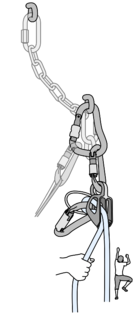
This rope support can be performed only from top 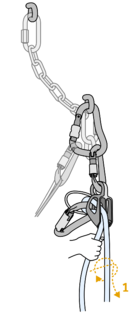
Start with a tie-off of the tuber (1) 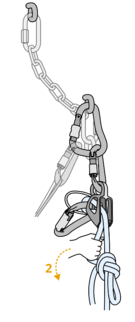
After the tie-off you can let go (2) 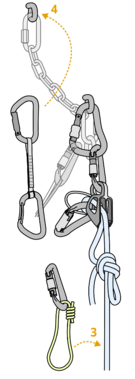
Tie a prusik onto the life strand (3) and place a quickdraw if you want to pull in downwards direction (optional, 4) 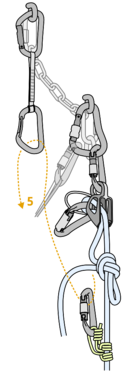
Pull the rope through the carabiner(s) (5) 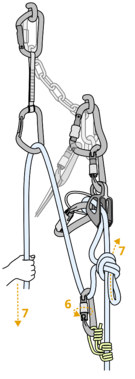
You can close the lock (6) and remove the tie-off while holding the brake strand (7) 
Now you are ready to provide the rope support